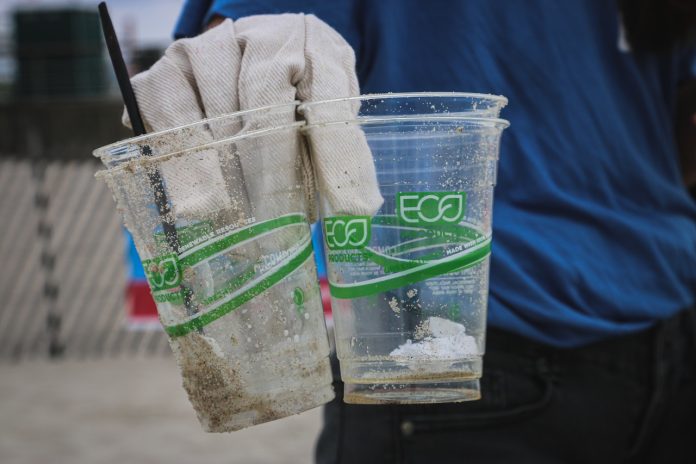Going green can be great for business, but that profitability has led to a problem with transparency. Some companies claim to be more sustainable than they are, even if they do so unintentionally. It’s called “greenwashing,” and truly eco-friendly organizations must take steps to avoid it in 2025.
What Is Greenwashing, and Why Should You Avoid It?
Greenwashing occurs when a brand makes misleading or outright false claims about its sustainability. Common greenwashing tactics include vague terminology — such as calling something “natural” without explanation — and promoting one environmental benefit while omitting other, larger negative trade-offs.
One of the most infamous examples of greenwashing came from Volkswagen when it falsified emissions testing records to make its vehicles seem more efficient than they were. Oil and gas enterprises have also been accused of the practice after promoting their green power initiatives despite fossil fuels driving most of their revenue.
Across all cases, falsely claiming an eco-friendly image is damaging. When the truth comes to light, it may drive customers away. Even when unintentional, it also counteracts sustainable progress by distracting from real environmental issues or taking investment away from areas that would make a bigger difference.

How to Prevent Greenwashing in 2025
It’s surprisingly easy to buy into this practice, so it takes specific action to avoid it. Here are five ways you can prevent greenwashing in 2025 at your organization.
Address Third-Party Emissions
One of the most important anti-greenwashing steps is to manage the carbon footprint of your suppliers and third parties. A company’s supply chain can produce 11 times more emissions than its direct operations, so this is a big opportunity for greenwashing. Even if your practices are eco-friendly, you can’t claim to be sustainable if you rely on an environmentally destructive party.
Improvement starts with getting more visibility from your suppliers and other third parties. Choosing only to work with verified sustainable institutions or working together to form a joint environmental plan will help lower these emissions. Any potential partner that can’t offer transparency on its carbon footprint is too high of a risk to do business with.
Use Eco-Friendly Materials
The resources that go into your buildings and products are another area to address. Material extraction and waste play a big role in your ecological footprint, so reducing this impact is a good way to promote real sustainability improvements.
Installing metal roofing is a great option if you need to expand or upgrade a facility. In addition to opening the door to recycled materials, metal roofs keep buildings cooler by reflecting light, which can lower HVAC-related emissions. Just be sure to source any metal from true recycled sources.
In cases where no recycled options are available, biodegradable or renewable alternatives to conventional materials are worth considering. Bamboo and mycelium can take the place of many structural supports or insulation but replenish quickly enough in nature to provide a low carbon footprint. Remember to consider emissions related to resource extraction methods such as mining, too.

Switch to Green Electricity
Energy is another notorious contributor to a brand’s environmental impact. While many promote electrification as a green business model, remember that most electricity comes from fossil fuels. You’ll need to use renewables if you hope to avoid greenwashing in these situations.
Solar and wind are the most widely available options. These projects typically require high upfront costs, but they’ll make up for it over time by reducing the amount you spend on getting power from the grid. Which renewable makes the biggest impact varies by area, so be sure to research before investing in anything to ensure your efforts remain as sustainable as possible.
Minimize Transportation Emissions
Transportation emissions are another big category to address. Electrification can be a good solution, but remember to partner with suppliers and logistics providers who also use electric vehicles (EVs). Even if you use EVs, relying on another party’s fleet of diesel trucks may counteract those benefits.
Your employees’ daily commute can factor into your carbon footprint, too. Review your workflows to see if any roles are possible to shift to a hybrid or remote model, which will reduce transportation pollution. Providing carpooling services or paying for public transit passes for workers may also help promote greener transport practices.
Monitor and Report Progress
Finally, no anti-greenwashing efforts are complete without detailed record-keeping. Reporting combats greenwashing by providing specificity over your efforts to reduce your environmental impact.
Start by measuring your current carbon footprint and identifying key areas to improve. Use that data to set goals and create a formal strategy to achieve them. Publish this plan and regularly update your progress toward those targets to show customers and other stakeholders you’re committed to eco-friendliness.
You’ll likely need to adjust your goals and strategies over time. Just be sure to record everything and always publish your strategic moves and the reasoning behind them to stay transparent.
End Greenwashing in 2025
Committing to ending greenwashing in 2025 is an excellent step forward for any company. Reducing fraud and misleading claims will promote greener practices and hold your operations accountable in the fight against climate change. You can go far outside these five steps, too, but start here to begin your anti-greenwashing journey.










